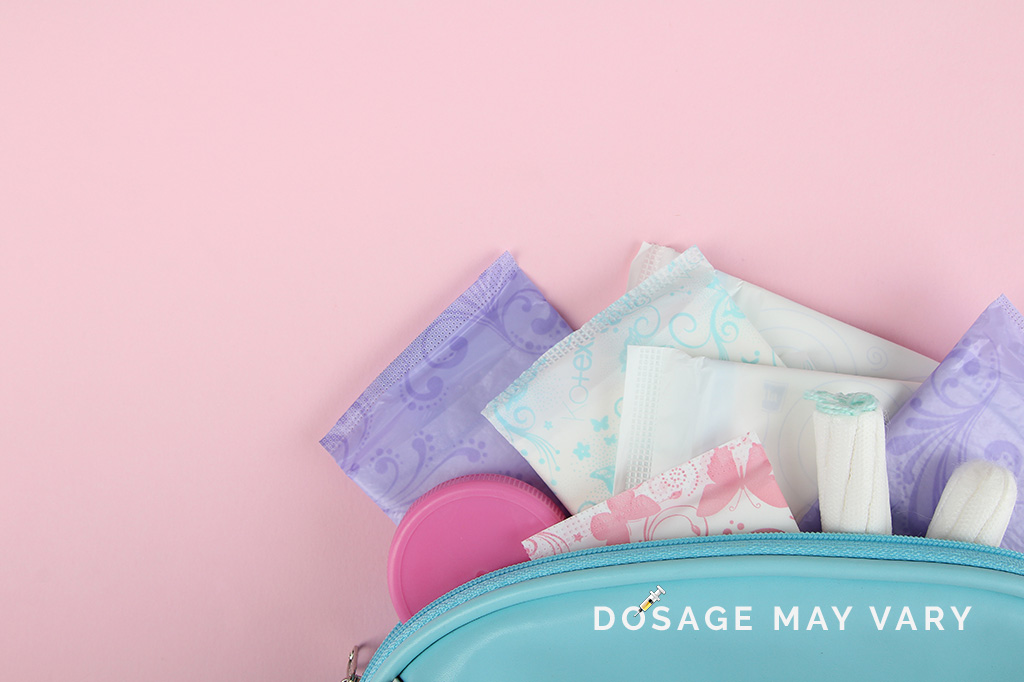Starting Your Period
Periods
When you reach puberty, your body will start a menstrual cycle established by your 2 ovaries which will culminate in a period. The age at which periods start can vary hugely; girls can start as early as 7 years old and as late as 15 or 16, although most will start around 11 or 12 years old. Prior to this, you will start to notice that your breasts and/or pubic hair have grown.
Periods occur roughly every 28 days, but can occur a few days earlier or up to a week or more later. You will find that once you’ve had periods for a couple of years that your body settles into a pattern that will firstly allow you to plan holidays in advance, but more importantly spot any deviations which should generally be referred to your doctor or gynaecologist.
In the few days preceding a period, you may find that your breasts feel more tender and you get more bloated; you may also get cramps building up in your pelvic area and feel moody or tired. All these will go away once your period starts.
Periods come in a variety of patterns, but by and large, you will notice some brown or pink discharge which then develops into red blood. Bleeding tends to be heaviest over the first 2 or 3 days and then start to reduce to brown /pink. Your period should be over within 5-7 days, by which time, you will have lost between 5 and 10 teaspoons full of blood – nothing to panic about: this is perfectly normal!
Equally you may find, especially in the early years of your cycle that you get all symptoms of a period, but no bleed or just brown spotting for a couple of days. Assuming you’re not pregnant, then this can be perfectly normal; I recall my gynae discussing this with my daughter when she first started and describing it as someone coming into the room and knocking the light switch on, but then turning it off again. It may all feel a bit strange as you get used to this monthly event, but my best advice would be to listen to your body. If you’re in any doubt, then speak to your mum or elder sister and see what she thinks; remember that she’s gone through all of this before.
Panty Liners or Tampons?
I’m going to suggest that you start by using liners; they come in a variety of absorption sizes and are just easy to use, then roll and dispose.
The time will come when you want the freedom of using tampons and your first thought is probably going to be “ OMG, where does it go?” Rest assured we’ve all been there; in my school, we had a girl in our year called Elizabeth who become the tampon nurse. She’d go into the toilet with you and wouldn’t let you go out until you’d got that sorted… Perhaps a less traumatic way would be to see your doctor or healthcare staff – please don’t be embarrassed as they can help; from my experience, men tend to be a lot gentler than women!
Tampons come in 2 forms: those with applicators and those without. My suggestion would be to go for the ones with applicators which makes for easier insertion and don’t require the same level of fastidious hand sanitising prior to use. If you feel that your vagina is a bit dry, then you can try using one of the lubrication gels to help. Applicator tampons are larger (nor so easy to fit in your hand if you’re going to the toilet at school, but they will require you to insert your fingers into your vagina to position them carefully. Whichever tampon you use, the most important thing is to ensure that the string is left outside of your vagina during insertion so that you can pull it out easily.
Tampons should only really be used when your bleeding is established and then as it starts to finish, you can switch back to liners again. There have been occasions where women have forgotten to remove their last tampon and only remembered when they start to notice an infection.
If for any reason, you’ve not been able to remove your tampon, please ask for help as soon as possible.
